Bori Bunder @ Platform 8 will host interactive contemporary artworks by Indian and international artists commenting on the city’s diversity, and on the current artist ecosystem

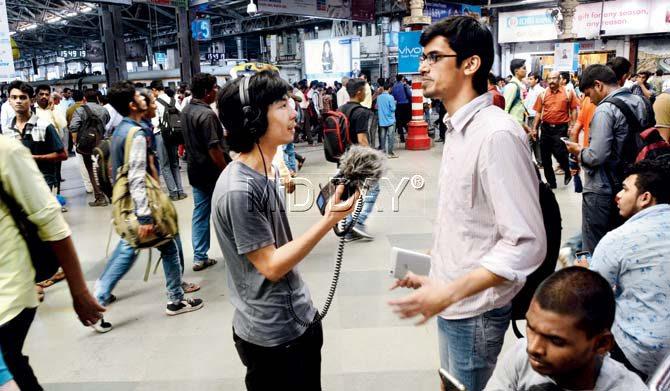
Hong Kong-based sound designer Wong Chun Hoi interviews commuters at CST for a ‘DJ Station’ that will broadcast these recordings. PIC/ SAYED SAMEER ABEDI
ADVERTISEMENT
While Bori Bunder railway station — on which now stands the magnificent CST — has long faded away from public memory and the urban landscape, an art festival will capture the spirit of the original 19th century railway station. [en]counters 2016 – Bori Bunder @ Platform 8 will open on Saturday and run till November 26.
The festival will also host interactive installations, exhibitions and talks across various venues, such as Sir JJ College of Art, Palladium Mall in Lower Parel and the Institute of Contemporary Indian Art, but will be centred around Mumbai’s first rail centre of commerce and cosmopolitanism. After all, in 1853, the first train in the Indian subcontinent ran from Thane to Bori Bunder.
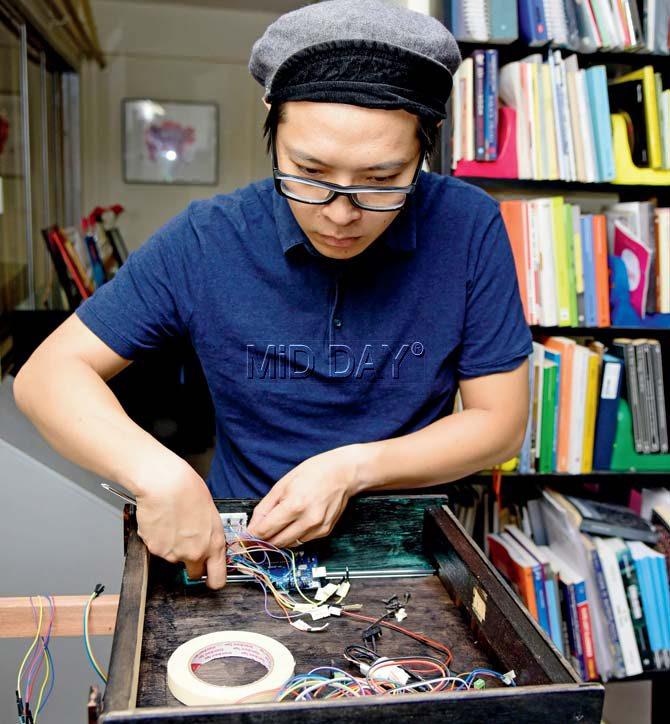 Artist Chu Yiu Wai tinkers with the Art Making Machine, which works every time a commuter puts in cardboard ‘coins’ that read ‘A Piece of Art’
Artist Chu Yiu Wai tinkers with the Art Making Machine, which works every time a commuter puts in cardboard ‘coins’ that read ‘A Piece of Art’
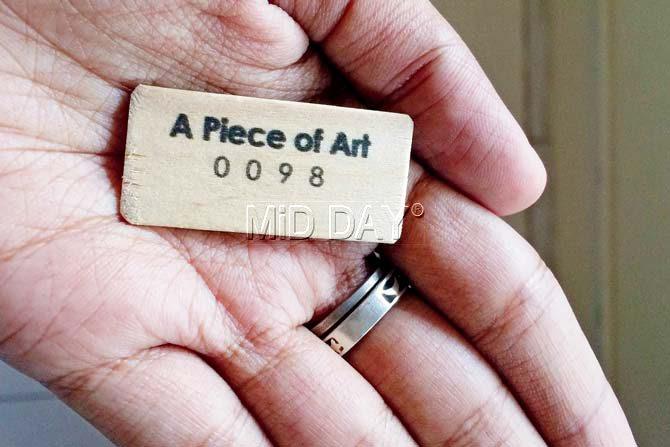
"Bori Bunder — which means a warehouse for jute goods — used to function as a place where merchants would collect goods that arrived from other parts of the country. During the colonial rule, it was a central hub and a strategic stronghold. But, the name Bori Bunder doesn’t exist anymore — these exist across the city; every place has its own Bori Bunder now — a haven of sacks,” says Leandre D’Souza, curator and co-founder of ArtOxygen, a contemporary art organisation that is presenting the festival.
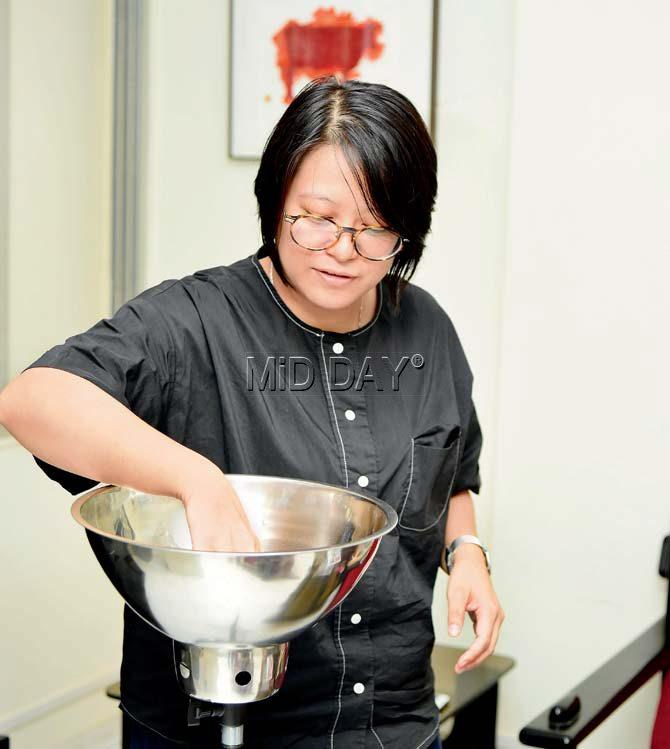
Peggy Chan with one of the six circular metallic bowls that carry good wishes for people passing by
The first set of artworks, which will be installed on platform 8 at CST on Saturday, will be presented by artists based in Hong Kong. Others from India, the UAE and Italy will follow.
Public perception
Wong Chun Hoi, a sound designer and engineer who has designed games to eliminate plastic, has been visiting CST in the past week, talking to commuters about their experience with one of Mumbai’s busiest stations. These audio recordings will be part of a ‘DJ station’ composed of tiny radios placed around various sites, starting with CST. “In my conversations with people, one of them told me that he was waiting at the station to use WiFi,” says Hoi.
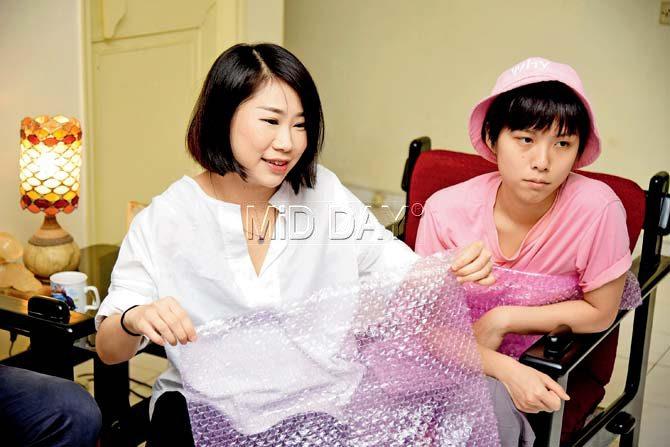
Artist duo Come Inside — Mak Ying-Tung (left) and Wong Ka-Ying — unravel a spool of heart-shaped bubble wrap for their installation called Obstacle. The structure itself will be formed out of bubble wrap procured from China as a satirical ploy to ‘import Chinese air to India’.
“We want to see what happens when we move from a studio to a space where we have little control. How will the work of art be received and perceived? What is the reciprocal relationship between city and artwork?” says D’Souza.
Previous editions of [en]counters have looked at similar concerns, such as in 2011 under the theme ‘the fluid city’. In this edition, a number of artists had responded to the role of water in the megapolis. Artist Prajakta Potnis, for instance, had traced with chalk the border of a lake in Thane that was fast drying up. “She had met with resistance with locals who suspected her to be a civil engineer,” says D’Souza. Now in its seventh edition, the theme of the festival is ‘diversity’.
Commuters collaborate
In line with the theme, Peggy Chan, a Hong Kong-based artist, will present Happy Birthday, a sound installation from which commuters will be able to encounter the familiar birthday chant in three languages — English, Mandarin and Cantonese — some which are by Indians residing in Hong Kong.
"In such a space, artists, whether international or from India, are no longer part of a top-down creative approach. Rather, they are like makers and take on different roles, like an interviewer. We know the starting point for the art, but the audience, which interacts with the artwork, determines the end,” says D’Souza, adding that several works to be presented at the festival have a long process to them, allowing commuters and visitors to become collaborators with the work. Take the case of Chu Yiu Wai’s Art Making Machine, intended as a vending machine for art. Little cards, printed with “Keep it. This is a record of your dream. You fill my soul”, become art-coins, which can be inserted into the gadget to make it work. Speaking in Cantonese, Wai says he has drawn on money as a symbol for the uber-commercial metropolis of Hong Kong, a symbol that can be relatable to Mumbai as well. “This is my way of saying that without local support from people, artists cannot survive.”
Among others, multimedia storyteller Owais Husain will showcase a videowork on the station’s inflow and outflow of goods, artist collective Come Inside (Mak Ying-Tung and Wong Ka-Ying) reveal their satirical ploy to release Chinese air into India through heart-shaped bubble wrap, while Teja Gavankar will present an animation video and sculptures of rangoli-like designs collaboratively made with commuters. “While the works are experimental and process-based, we have paid attention to balance aesthetics with ethics. The artist has the responsibility to not diminish the value of art just because it is collaborative or participatory,” says D’Souza.
 Subscribe today by clicking the link and stay updated with the latest news!" Click here!
Subscribe today by clicking the link and stay updated with the latest news!" Click here!






